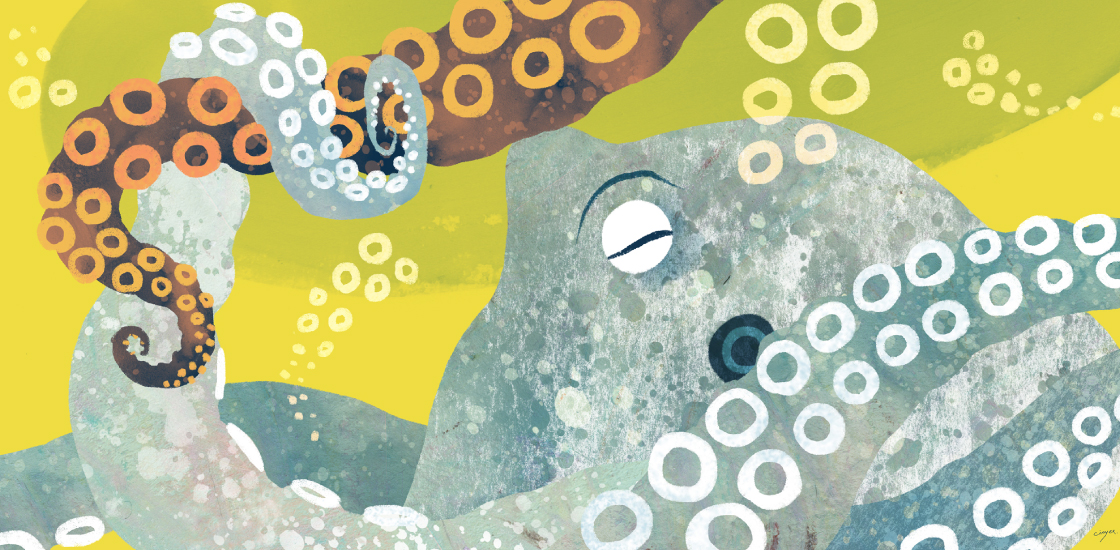Getting eight arms around autism
Octopuses can solve some of the same problems as people but do so in unusual ways.

Usually, conversations justifying animal models of autism center on how similar a species is to humans. But Gül Dölen takes a different view. “What if we went for the animal that is least similar to humans?” says Dölen, associate professor of neuroscience at the Johns Hopkins University in Baltimore, Maryland. “You want to compare across maximally different animals who can solve the same kinds of problems.”
That principle led Dölen to octopuses, invertebrates with eight arms, three hearts and blue blood. The animals do have at least one thing in common with people, however: They are known for being exceptionally clever. “Octopuses are able to do some fairly complex cognitive tasks,” she says, solving puzzles to access food, even outwitting their keepers to escape from aquariums. “And yet their brains look nothing like ours.”
Octopuses do not have a cerebral cortex or any of the brain structures that have been implicated in social cognition in humans. But at a molecular level, the octopus nervous system has a lot in common with ours. Dölen has found evidence that that the signaling molecules that underpin social behavior in people perform a similar function in octopuses.
This evidence came from an unorthodox experiment: Dölen and her team exposed the animals to 3,4-methylenedioxymethamphetamine (MDMA), the active ingredient in the drug ecstasy. MDMA interacts with receptors for the signaling molecule serotonin and thereby boosts sociability. It makes people feel especially close to and connected with others. If it had a similar effect in octopuses, the researchers reasoned, studying octopuses could yield insights into human social behavior and how it differs in autism. Scientists could also use the animals to test medications akin to MDMA that improve sociability.
Dölen and her colleagues put four California two-spot octopuses (Octopus bimaculoides) in water containing MDMA, allowing the animals to absorb the drug through their gills. Then they moved the animals, one at a time, to a tank where the animals had a choice of two chambers: One contained an object and the other housed another octopus (which was in an additional enclosure to prevent an altercation). After absorbing MDMA, the typically solitary, asocial creatures spent more time with the other octopus than the object. The reverse was true for controls, the researchers reported in 2018. The octopuses exposed to MDMA went so far as to press their bodies up against the enclosure containing the other octopus and wrap their arms around it as if in a hug.
Dölen thinks that studying octopuses could help scientists understand the molecular basis of theory of mind, the ability to infer what another creature is thinking. This skill may be altered in autism.
Some observations hint that octopuses have theory of mind, she argues. For example, the larger Pacific striped octopus hunts shrimp by stealthily reaching one of its arms around the shrimp’s body and tapping its back end. The shrimp then jumps forward, where the rest of the octopus is waiting to gobble it up. By contrast, the octopus pursues hermit crabs by pouncing from behind, suggesting that it knows shrimp can see things behind them — so it needs to be sneaky — but hermit crabs are blind to their backsides because of their shell.
Dölen plans to disrupt the octopus versions of autism genes and record the effects on the animals’ hunting behavior. This could suggest a role for these genes in social cognition in the context of a unique animal, which might in turn inspire new autism therapies, she says.
Recommended reading

Too much or too little brain synchrony may underlie autism subtypes

Developmental delay patterns differ with diagnosis; and more

Split gene therapy delivers promise in mice modeling Dravet syndrome
Explore more from The Transmitter

During decision-making, brain shows multiple distinct subtypes of activity

Basic pain research ‘is not working’: Q&A with Steven Prescott and Stéphanie Ratté
